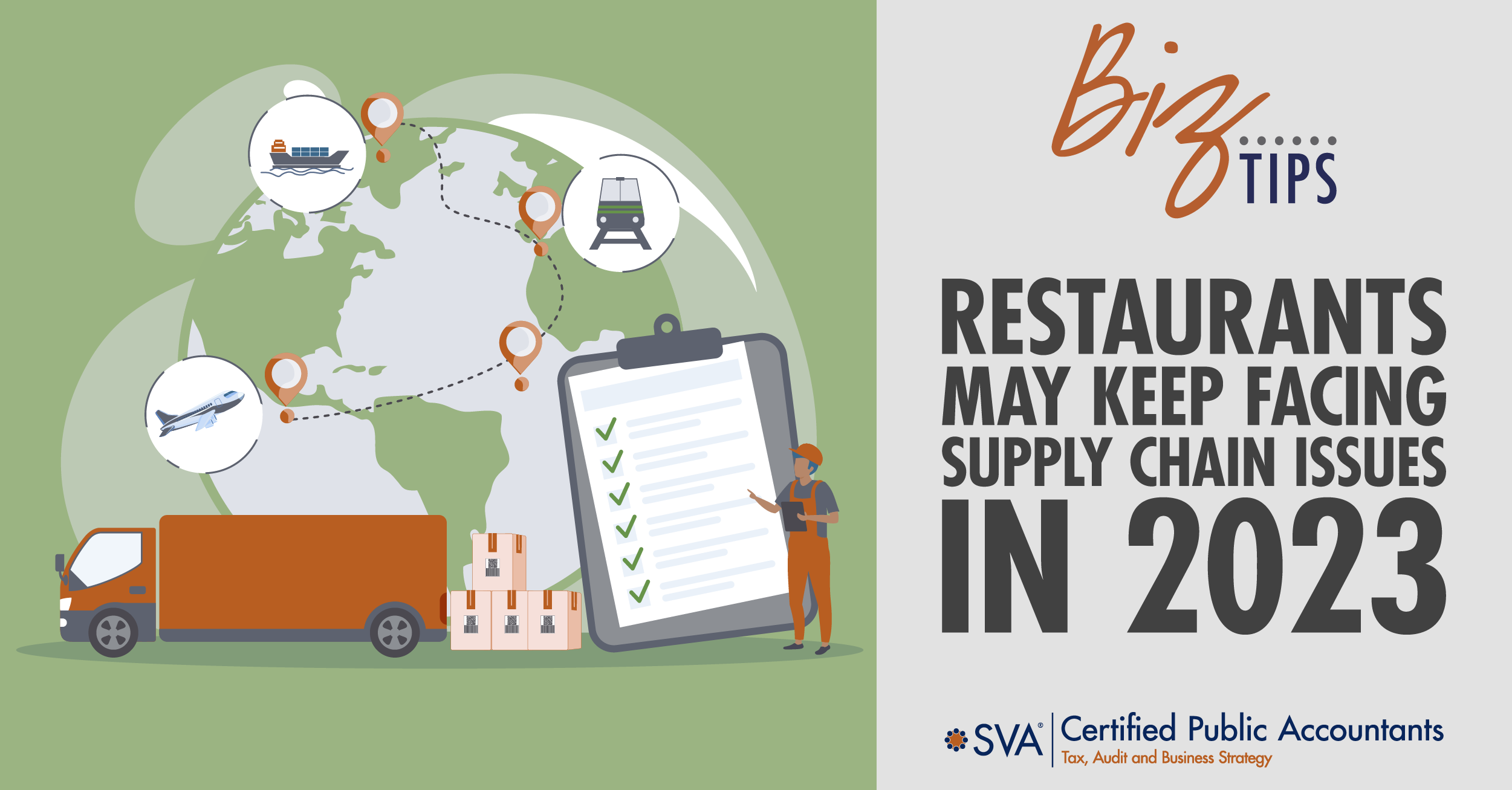The last few years have been difficult, to put it mildly, for the restaurant industry. The COVID-19 pandemic dealt a serious blow to countless restaurants, from small independent operations to multinational chains.
The economic disruptions caused by the pandemic affected global supply chains, which in turn caused further harm to the restaurant industry. While some of these problems have begun to recede, issues with supply chains are likely to continue into 2023.
The following is an overview of what has happened, how it has affected the industry, and what restaurants can do moving forward.
What is Causing Supply Chain Shortages?
The supply chain shortages affecting the restaurant industry began with the COVID-19 pandemic, which hit the United States with full force in March 2020.
The most immediate hit came from public health orders that closed or restricted the operations of restaurants across the country. Inside dining effectively ceased to exist for months, while restaurants that were not used to making to-go orders had to learn very quickly.
The pandemic hit the agricultural and meatpacking industries quite hard. Numerous meatpacking plants saw serious COVID-19 outbreaks among employees.
Other sectors of the food industry also felt the effects, from food delivery to grocery stores. No part of the global supply chain escaped the impact of the pandemic, and more challenges followed.
As the world slowly emerged from the worst of the pandemic, inflation and labor shortages appeared. High rates of inflation all over the world raised prices on almost everything, from raw food materials to products like straws and packaging.
Opinions vary with regard to the cause of labor shortages, but the bottom line has been that fewer workers are available in many areas of the economy that affect food production and service.
The system has yet to recover fully. While many restaurants did not survive the pandemic, the ones that did have to adapt in a variety of ways.
What Impact Have Supply Chain Shortages Had on Restaurants?
Restaurants have found a variety of ways to respond to supply chain shortages and other problems.
Generally speaking, large restaurant companies have advantages over mom-and-pop businesses. Large chain restaurants can use their size and influence, for example, to negotiate lower prices on ingredients and supplies. This has allowed them to avoid some of the methods employed by other restaurants to weather the past few years.
Higher Prices
As the cost of ingredients and supplies has risen, many restaurants have passed these additional costs on to their customers in the form of higher prices. This is not unusual during periods of inflation, although that does not stop it from being unpopular with consumers.
While it is difficult to say how widespread this practice has been, some restaurants around the country have been more forthright with their customers about the impact of inflation. Instead of raising prices across the board, they are adding an 8% to 10% “inflation fee” to customers’ checks. Customers, by and large, are not pleased.
Shrinkflation
Another tactic employed by some restaurants to offset the rising cost of goods has been to provide customers with less food for the same price.
Informally dubbed “shrinkflation,” consumers have observed this in both restaurants and grocery stores. Prices for a dish might remain the same, but the portions have gotten smaller. This has also proved to be unpopular.
What Can Restaurants Do in 2023 to Deal With Shortages?
Restaurants have numerous options for handling supply shortages and price increases. As discussed above, raising prices and serving less food are possibilities, although they are likely to lead to displeased customers. Other possible options include the following:
Menu Flexibility
Restaurants that regularly change their menus might be able to adapt by basing daily menus on what ingredients and supplies are available. Instead of planning menus days in advance, chefs would have to wait until deliveries arrive to see what they could make.
Customer Feedback
It might be tempting to assume that all restaurant customers want to pay less for more food, but this might not always be the case. At some restaurants, for example, customers might value the quality of the ingredients above all else. They might be willing to pay more to maintain that quality. Restaurants cannot know for certain unless they ask.
Efficiency
Large restaurant chains and franchises cannot be as flexible as smaller operations when it comes to their menus. They have an advantage, however, when it comes to systematizing and streamlining their operations.
Technology
Computers are constantly changing how we run different types of businesses. The restaurant industry is no different. Software tools are available that can help restaurants of all sizes handle matters like tracking inventory and managing shift assignments.
The restaurant industry has faced numerous challenges in the wake of the COVID-19 pandemic. Supply chain shortages, inflation, and labor shortages have all contributed to a difficult environment for restaurants to operate in. While many businesses have had to close their doors, others have adapted by raising prices or serving less food.
Moving forward, restaurants have a variety of options to consider in order to deal with supply shortages and price increases. Whether it's through menu flexibility, customer feedback, efficiency, or technology, restaurants must continue to adapt to survive and thrive in this challenging environment.

© 2023 CPA ContentPlus

